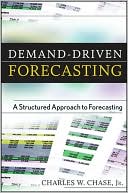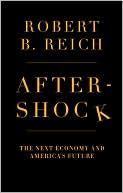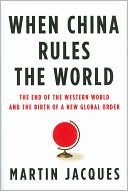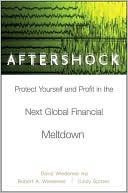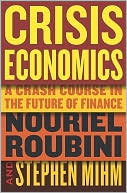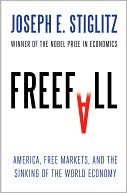Demand-Driven Forecasting: A Structured Approach to Forecasting
Search in google:
Praise for Demand-Driven Forecasting A Structured Approach to Forecasting Many companies still view quantitative forecasting methods as a "black box" or unknown approach that adds little value to improving overall demand forecast accuracy. Fortunately, there is a new awareness emerging across many industries of the value of integrating demand data into the demand forecasting process. Equipping you with solutions that can sense, shape, and predict demand using highly sophisticated methods and tools, internationally renowned author and thought leader Charles Chase provides you with a basic understanding of the methods and processes required to implement a demand-driven forecasting process in Demand-Driven Forecasting: A Structured Approach to Forecasting. From a review of the most basic forecasting methods, to the most advanced time-series methods, and innovative techniques in use today, this guide defines demand-driven forecasting, uniquely offering a fundamental understanding of the quantitative methods used to sense, shape, and predict demand within a structured process. A must-read for CEOs, CMOs, CFOs, supply chain managers, sales managers, marketing brand managers, and demand forecasting analysts, Demand-Driven Forecasting: A Structured Approach to Forecasting covers: Myths versus realities of forecasting Causes of forecast error Purposes for measuring forecasting performance Forecasting methods using causal data Sensing, shaping, and linking demand to supply Combining analytics and domain knowledge in a structured framework As a forecast practitioner, it's up to you to demonstrate the value of analytics to senior-level managers. Filled with real-life examples to build a business case for the justification of demand-driven forecasting, Demand-Driven Forecasting: A Structured Approach to Forecasting is your detailed blueprint to better understand this new structured approach and add significant improvement to demand forecast accuracy.
Foreword. Preface. Acknowledgments. Chapter 1 Demystifying Forecasting: Myths versus Reality. Data Collection, Storage, and Processing Reality. “Art of Forecasting” Myth. End-Cap Display Dilemma. Reality of Judgmental Overrides. Oven Cleaner Connection. More Is Not Necessarily Better. Reality of Unconstrained Forecasts, Constrained Forecasts, and Plans. Northeast Regional Sales Equation. “Hold and Roll” Myth. The Plan That Wasn't Good Enough. Summary. Notes. Chapter 2 What Is Demand-Driven Forecasting? “Do You Want Fries with That?” Definition of Demand-Driven Forecasting. What Is Demand Sensing? Data Requirements. Role of Sales and Marketing. What Is Demand Shaping? Integrating Demand-Driven Forecasting into the Consensus Forecasting Process. Importance of Business Intelligence Portals/Dashboards. Role of the Finance Department. Demand-Driven Forecasting Process Flow Model. Key Process Participants. Benefits of Demand-Driven Forecasting. Summary. Chapter 3 Overview of Forecasting Methods. Underlying Methodology. Different Categories of Methods. How Predictable Is the Future? Some Causes of Forecast Error. Segmenting Your Products to Choose the Appropriate Forecasting Method. Summary. Chapter 4 Measuring Forecast Performance. We Overachieved Our Forecast, So Let’s Party! Purposes for Measuring Forecasting Performance Standard Statistical Error Terms. Specific Measures of Forecast Error. Out-of-Sample Measurement. Forecast Value Added. Summary. Chapter 5 Quantitative Forecasting Methods Using Time Series Data Understanding the Model-Fitting Process. Introduction to Quantitative Time Series Methods. Quantitative Time Series Methods. Moving Averaging. Exponential Smoothing. Single Exponential Smoothing. Holt's Two-Parameter Method. Holt's-Winters' Method. Winters' Additive Seasonality. Summary. Chapter 6 Quantitative Forecasting Methods Using Causal Data. Regression Methods. Simple Regression. Multiple Regression. Box-Jenkins Approach to ARIMA Models. Box-Jenkins Overview. Extending ARIMA Models to Include Explanatory Variables. Unobserved Component Models. Summary. Chapter 7 Weighted Combined Forecasting Methods. What Is Weighted Combined Forecasting? Developing a Variance Weighted Combined Forecast. Summary. Chapter 8 Sensing, Shaping, and Linking Demand to Supply: A Case Study Using MTCA. Linking Demand to Supply Using Multi-tiered Causal Analysis. Case Study: The Carbonated Soft Drink Story. Summary. Appendix 8A Consumer Packaged Goods Terminology. Appendix 8B. Adstock Transformations for Advertising GRP/TRPs. Chapter 9 Strategic Value Assessment: Assessing the Readiness of Your Demand Forecasting Process. Strategic Value Assessment Framework. Strategic Value Assessment Process. A SVA Case Study: XYZ Company. Summary. Suggested Reading. Index.
